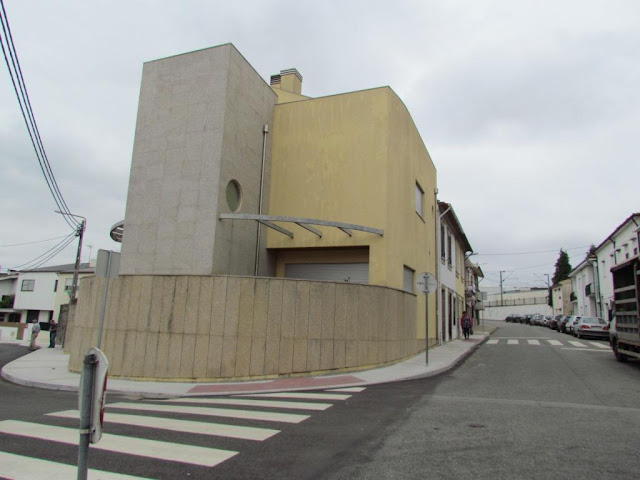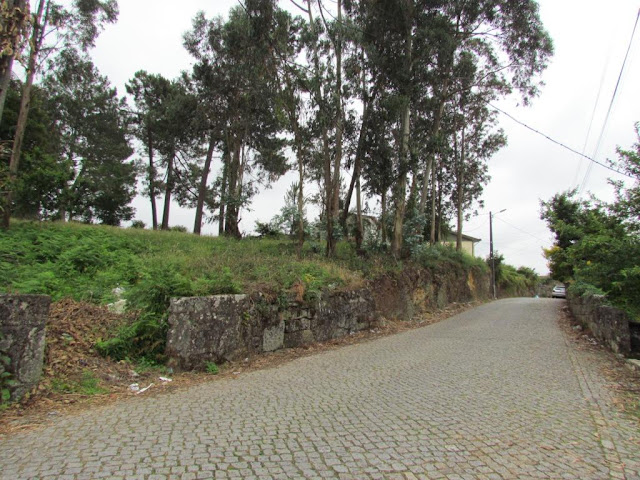ERMESINDE
GPS: N 41.21960; W 8.56051
It belongs to the Greater Metropolitan Area of Porto and is 9 km northeast of this city.
It is the smallest of the four parishes in the municipality of Valongo with 7.65 km² (2013), with 38798 inhabitants (2011), causing its population density to be 5071.63 inhabitants / km².
It is the most populous parish in the municipality of Valongo, being a parish only since 1836 when the City Council was in Alfena.
The parish of São Lourenço de Asmes was the result of the detachment of the southern part of the parish of Alfena and was elevated to a village in 1938. In the first quarter of the 20th century, it was considered a promising resting place, such was the tranquility and rural setting it offered. In 1990, Ermesinde was elevated to a city.
It is worth mentioning the Ermesinde Station, the focal point of Entre Douro e Minho that serves many of the region's inhabitants on the Douro Line, Minho Line, and Leixões Line.
Located in the northwest part of the municipality of Valongo and half a dozen kilometers from the city of Porto, Ermesinde confronts in the north with the parish of S. Pedro Fins (Maia), in the west with the parish of Águas Santas (Maia), in the east with the parish of Valongo, the northeast with the parish of Alfena and the south with the parish of Baguim do Monte (Gondomar).
Crossed by the river Leça, and covering an area of about seven square kilometers, this city has a slightly rugged topography, with an average altitude of around ninety meters. Its highest point is in Lugar da Formiga (with an altitude of about 140 meters), while the lowest level will be reached in the places of Cancela and Travagem.
The city of Ermesinde more than doubled the population between the 70s and the 80s, with a great growth, not always considered and organized, in the last quarter of the 20th century. Thus, new areas and neighborhoods began to emerge, such as the Gandra and Travagem areas, among others.
The city of Ermesinde became then and is still considered one of the main dormitory cities in the Porto Metropolitan Area. Ermesinde was considered the 5th city in the country where the most resident or student population moved to another municipality to exercise its activity (55.7% of the population).
Transportation
Bus
The city is served by several STCP bus lines: 701, 702, 703, 704, 705, 706, and 707. Maia Transportes has lines 11, 12, and 13 that also serve the city, as well as Maré Matosinhos with lines 107 and 12, Gondomarense with line 70, among others.
Train
Passing through the Ermesinde Railway Station, there are urban trains that connect the city with:
Porto, Rio Tinto, Braga, Famalicão (Braga line);
Guimarães, Santo Tirso, Vila das Aves (Guimarães line);
São Romão, Trofa (Braga and Guimarães lines, before Lousado Station);
Vila Nova de Gaia, Espinho, Esmoriz, Cortegaça, Ovar, Estarreja, Cacia, Aveiro (Aveiro line, by transfer at Porto - Campanhã Station);
Valongo, Campo, Paredes, Penafiel, Caíde, Marco de Canaveses, Pocinho, Régua through the Caíde / Marco de Canaveses Line.
In addition to the urban trains, the Ermesinde Railway Station has intercity and Alfa Pendular trains connecting the rest of the country. There is also the Celta train, which connects Porto to the Spanish city of Vigo, to the north, which passes through Ermesinde Station from Porto - Campanhã. In addition to passenger transport, there is also considerable freight traffic, notably using the Leixões Line.
Road connections
Motorways
A4
A41
A3 (through the A4 and A41 accesses)
💓💓💓💓💓
Cête;
Maia;
PORTO - WHERE THE RIVER KISSES THE SEA;PORTO - Sao Bento Train Staion + Public
Transport in Oporto Metropolitan Area;
PORTO - PORTO ESSENTIALS I;
PORTO - PORTO ESSENTIALS II;
PORTO - PORTO ESSENTIALS III;
PORTO - PORTO ESSENTIALS IV;
Póvoa do Varzim;
💓💓💓💓💓
Return to mainland Portugal &
the Azores and Madeira islands





















































































